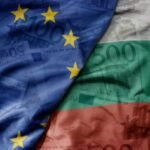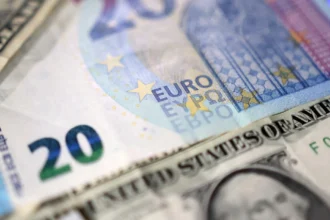
U.S. President Donald Trump (Photo: Carl Court/Pool via REUTERS)
The euro is seeing its fastest growth in 15 years, with
investors increasingly viewing it as a viable alternative to the U.S. dollar
amid mounting global uncertainty, Bloomberg
reported on April 14.
The currency has climbed to its highest level in three
years, nearing the $1.15 mark, and hedge funds and analysts are now projecting
it could strengthen to $1.20 in the next three to six months.
The rally is tied to a shift in the dollar’s traditional
role as a safe-haven asset, triggered by new trade tariffs imposed by the
administration of Donald Trump. In just two days last week, the euro rose
nearly 4%, marking the second-largest options volume spike in history, according
to Depository Trust & Clearing Corp.
“The market is already trading on euro strength, and more
investors are jumping on the trend. My previous optimistic forecast of
$1.15–$1.20 is now my base-case scenario,” said Jordan Rochester, head of macro
strategy at Mizuho International Plc.
Pressure on the dollar has intensified since the United
States introduced sweeping tariffs on imports from China, unsettling global
markets. As a result, investors have turned to the euro, seeing it as a more
stable option.
Germany’s finance minister has already urged governments to
take advantage of the moment and elevate the euro’s role in global trade.
Following the removal of strict fiscal rules in Germany,
public spending is expected to increase — a move that could strengthen the
eurozone economy amid a broader global slowdown. In addition, the new tariffs
are set to narrow the EU’s trade surplus with the U.S., further reducing demand
for dollar-denominated assets.
At the same time, Wells Fargo’s Erik Nelson cautioned that shifts
in global currency preferences unfold over months or even years, not days.
Still, the euro is beginning to assume some of the dollar’s
traditional functions as a reserve currency — particularly as doubts grow over
the resilience of the U.S. economy.
“We’re witnessing a structural shift that, over the medium
term, favors the euro,” said Van Luu, head of currency strategy at Russell
Investments.
Earlier reports noted signs of slowing economic growth in
the U.S., partly due to ongoing tariff uncertainty, have already hurt the
American currency.
The dollar index — which tracks the greenback against six
major peers — fell to 105.08, its lowest level since Nov. 11, 2025. The dollar
also slipped 0.4% against the Japanese yen to 149.19, just above a five-month
low.
Follow us on Twitter, Facebook and
Google News





















